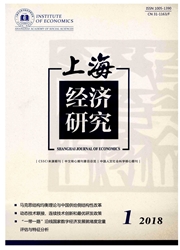

 中文摘要:
中文摘要:
该文采用CGE框架下的多目标规划模型(Multi-objective Decision Making Model),探索了公共政策设计中经济与环境目标之间的冲突与平衡。具体利用中国SAM数据,选取最大化GDP增长率,最小化生产要素投入成本、失业率、财政赤字率和碳排放增长率作为政策目标体系,将政府的公共投资与税收政策作为政策工具,并选取约束法和加权目标规划法进行求解。其中,约束法在不损害其他目标的前提下对某个中心目标进行Pareto改进,其有效解包括各行业公共投资的增减与各类税率的调整,为国家实施经济环境协调发展的产业和财税政策提供了理论借鉴;而加权法强调各政策目标达到政府主观满意度、而非追求最优化,因而政策设计更能体现决策者的偏好与预期。
 英文摘要:
英文摘要:
Based on a Multi-objective Programming Model in a CGE framework,this paper explores the conflicts and balances between economic and environmental targets in public policy making.As an illustration,the model is applied to Chinese SAM data,in which objectives include maximizing GDP growth rate,minimizing factor input costs,unemployment rate,public deficit rate and carbon emission growth rate;instruments include public investment and tax policies;solving approaches include constraint method and weighted goal programming.Constraint method Pareto-improves one central goal without hurting the others,containing changing rates in public investment by industry,and different tax rates could shed some light on the national industrial and fiscal policies in pursuit of harmonious development of economy and environment.Weighting method emphasizes policy satisfying level instead of optimization,the design of which much better reflects the decision makers' preference and expectation.
 同期刊论文项目
同期刊论文项目
 同项目期刊论文
同项目期刊论文
 期刊信息
期刊信息
